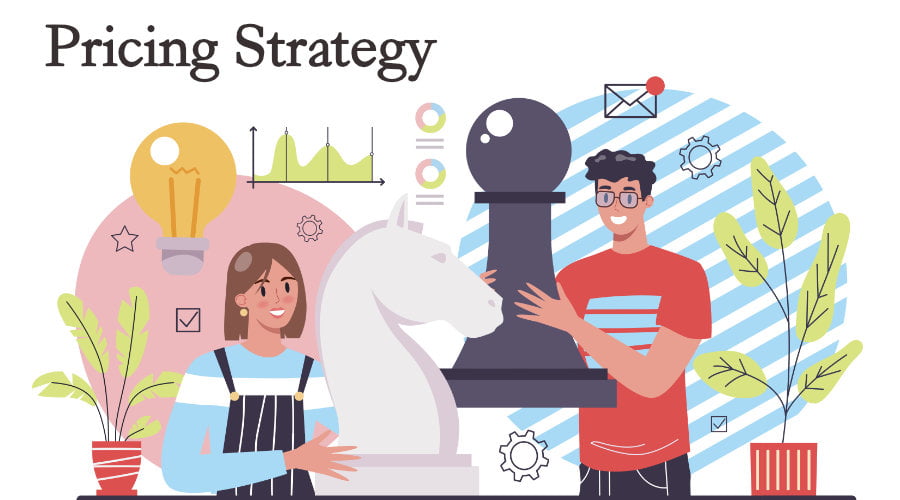
Setting the right price for your product or service can be a tough challenge. You must be competitive while still making a profit. Dynamic pricing helps you optimise your pricing to maximise profits based on real-time data.
But collecting and analyzing this data can be time-consuming and complex. That’s where price intelligence automation tools come in. They help you make informed decisions about your pricing strategy.
Dynamic pricing, in conjunction with price intelligence, helps you run a successful business for long-term success. Here’s why.
What’s Dynamic Pricing and How It Works
Dynamic pricing (aka ‘surge pricing‘) is a strategy in which prices fluctuate according to the demand for a product or service. Dynamic pricing is a powerful tool to achieve optimal prices and increase profit.
Dynamic pricing allows your business (of any size) to adjust prices according to market conditions, customer demand, and other data-driven insights. That way, you can charge your customers the highest fee they are willing to pay.
Through dynamic pricing, you can monitor changing markets, understand consumer behaviour, and optimise your prices to maximise profits accordingly.
For those reasons, dynamic pricing enables your business to stay competitive and capitalise on emerging opportunities while noting consumer trends quickly and efficiently.
When you leverage market intelligence technology with dynamic pricing, you can keep up with competitors and manage inventory more effectively. So, let’s expand on price intelligence.
Price Intelligence and Competitiveness
Price intelligence (or ‘Competitive Price Monitoring‘) is the process of collecting, analysing, and using data to determine the best pricing strategy. It’s an invaluable tool in an increasingly competitive market.
By gathering and analysing data on product prices, competitor pricing strategies, market trends, and more, you can gain insights, understand current market conditions, forecast future changes more accurately, keep up with changes in the marketplace, and stay one step ahead of the competition. That allows you to make smarter decisions and set the best price for maximum profitability while remaining price-competitive.
Price intelligence and dynamic pricing help you adjust prices in response to changing conditions. That way, you can respond quickly to market forces and challenges and capitalise on short-term opportunities and long-term trends.

Image by vector4stock on FreepikHow TO Use Dynamic Pricing and Price Intelligence
You can use dynamic pricing and price intelligence in many industries, such as hospitality, retail, transportation, and more. Let’s expand on these three examples.
- Hospitality: you can adjust room rates according to the season or demand.
- Retail: you can refine your prices based on the time of day, location, or other factors.
- Transportation: you can set fares based on the time of day, demand, or other factors.
Tips for Successful Dynamic Pricing
Follow these clever strategies when implementing effective dynamic pricing.
- Have a keen understanding of the customer’s sensitivity and willingness to pay.
- Establish price limits and identify which products are eligible for dynamic pricing.
- Use reliable data sources such as competitor pricing information, market reports or price databases, and industry best practices to help inform your decisions.
- Adjust prices in real-time, according to market conditions, to gain an optimal outcome.
- Use an all-in-one automation tool for web scraping, price monitoring, data analytics, and dynamic pricing to quickly collect and analyse data and revise your prices automatically and efficiently.
This will help you improve operations and increase your profits.
Recap: Benefits and pitfalls
| Benefits | Pitfalls |
|---|---|
| Dynamic pricing and price intelligence data collection are powerful business tools that maximise revenue and ensure profitable relationships. | Poorly implemented practices can lead to customer dissatisfaction or hostility towards the company in question, which may damage the business’s reputation. |
| Dynamic pricing helps you increase profits and gain a competitive edge in your market. | To ensure success, businesses must exercise caution when implementing dynamic pricing or collecting price intelligence data. |
| Price intelligence can help you understand your competitors’ prices for their products. That way, you can ensure you are offering your customers the best possible prices. | Collecting too much data can create issues around data privacy and has the potential to land companies in hot water over potential GDPR breaches. |
| Dynamic pricing can be a successful strategy for increasing sales and profits with careful planning and execution. | When implementing dynamic pricing, it’s essential to consider your customer’s willingness to pay your cost of goods sold and the overall competitiveness of your market. |
Today, dynamic pricing is a required success factor for any business. We can help you find or create the best solution tailored to your goals. You can fill out the form below to request a free consultation with our data experts.
Credits:
Best Price image by Freepik | Woman Image by lookstudio on Freepik

















[…] three main activities you must undergo to make dynamic pricing possible are as […]
[…] This kind of competitive monitoring compares prices and finds the best ones to effectively analyse the market and craft dynamic pricing strategies. […]
[…] business world, staying one step ahead of the competition has never been more critical. Competitor monitoring (the tracking, analysing, and understanding process of your competitors’ strategies) is […]
[…] can collect pricing data from various travel websites to track price fluctuations. This information helps your tourism business (hotel, airline, restaurant, etc.) optimise its […]
[…] the best deal and book their beloved trip at the lowest price. Through web scraping, you can do pricing monitoring which is essential to allow your user to compare prices across different […]
[…] helps in dynamic pricing, thanks to which you can automatically adjust rates in real-time based on demand, occupancy, and […]
[…] historical booking data, trends, and competition (price, marketing, promotions) to implement dynamic pricing […]
[…] You can track prices on airline websites, OTAs, or flight comparison platforms. With the addition of data mining algorithms and data analytics tools, you can use these airline data to implement or improve your dynamic pricing strategies. […]
[…] Websites like Amazon, eBay, and Alibaba generate massive amounts of data on product sales, customer reviews, and pricing dynamics. Scraping data from e-commerce platforms can provide insights into consumer preferences, product demand, and pricing strategies. […]
[…] that can help you unlock the value of the digital data that is all around us. When combined with dynamic pricing, they can help you maximise profit while still providing value to your […]